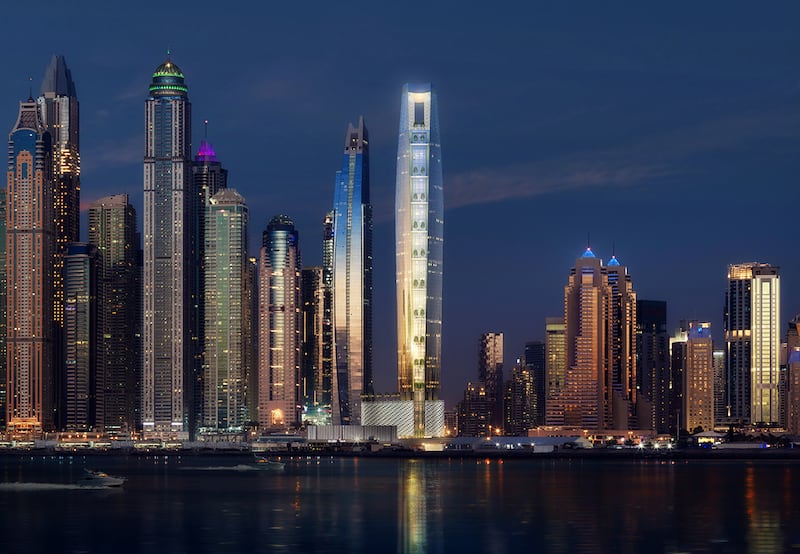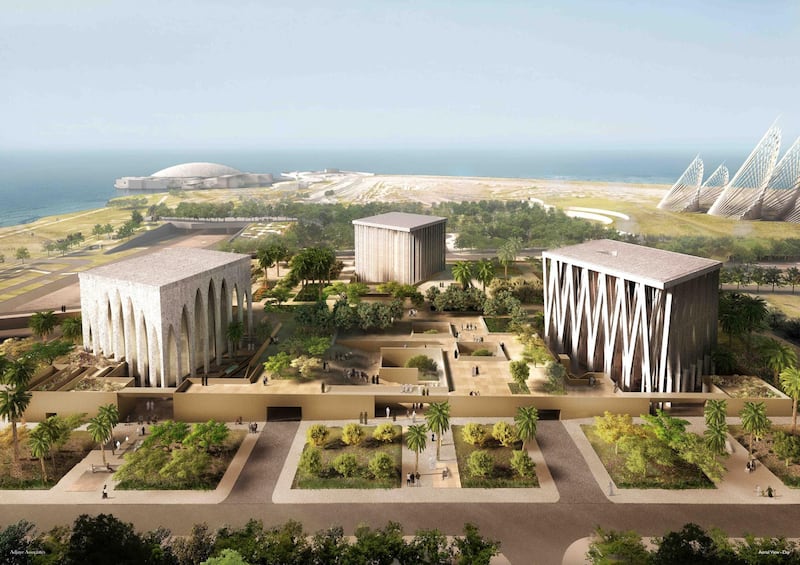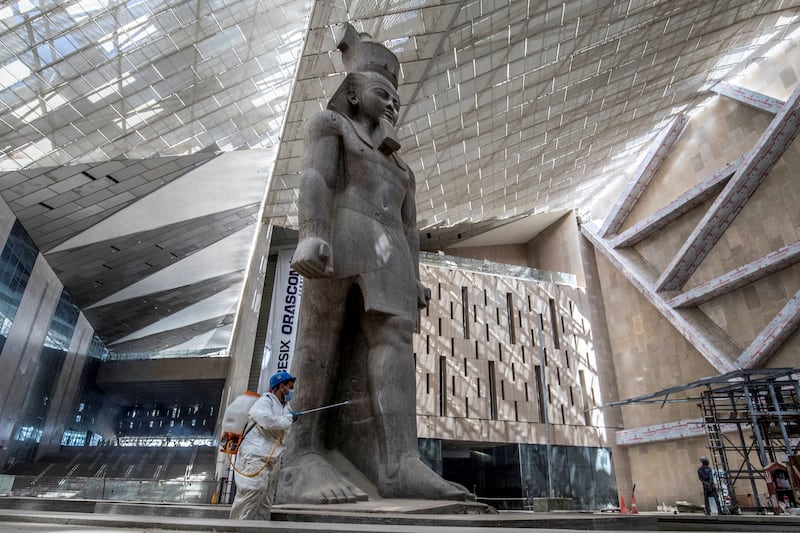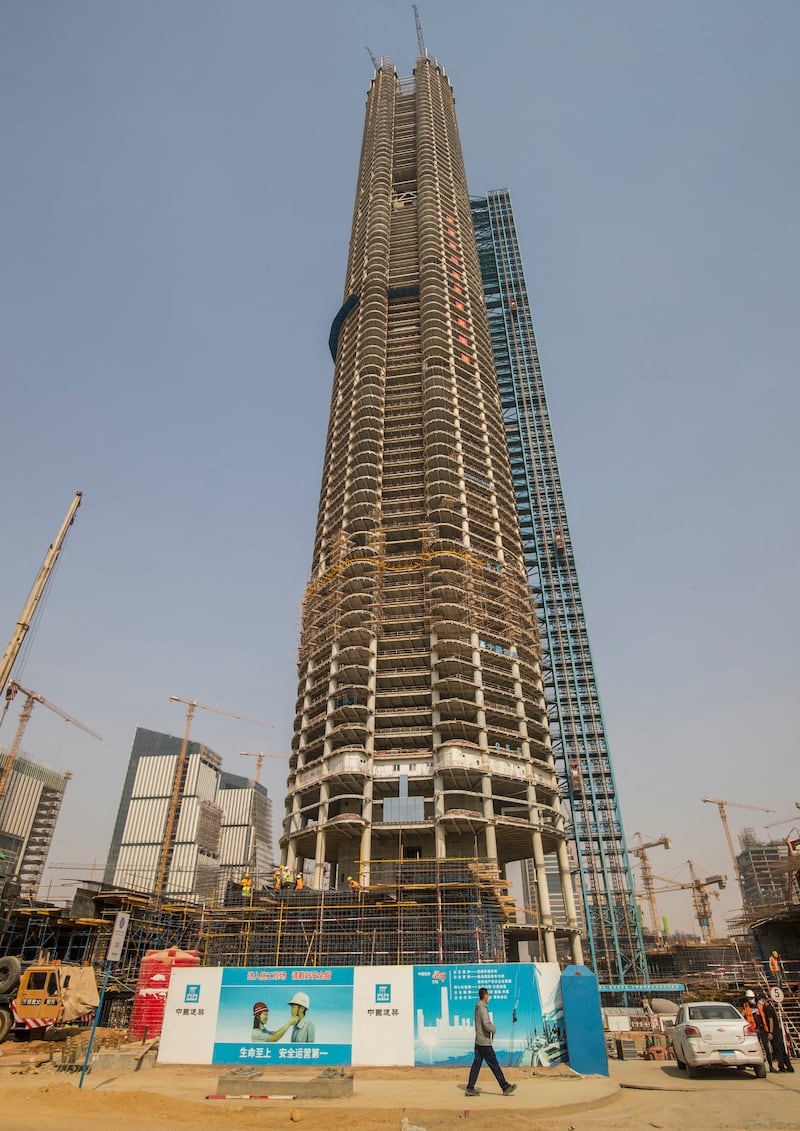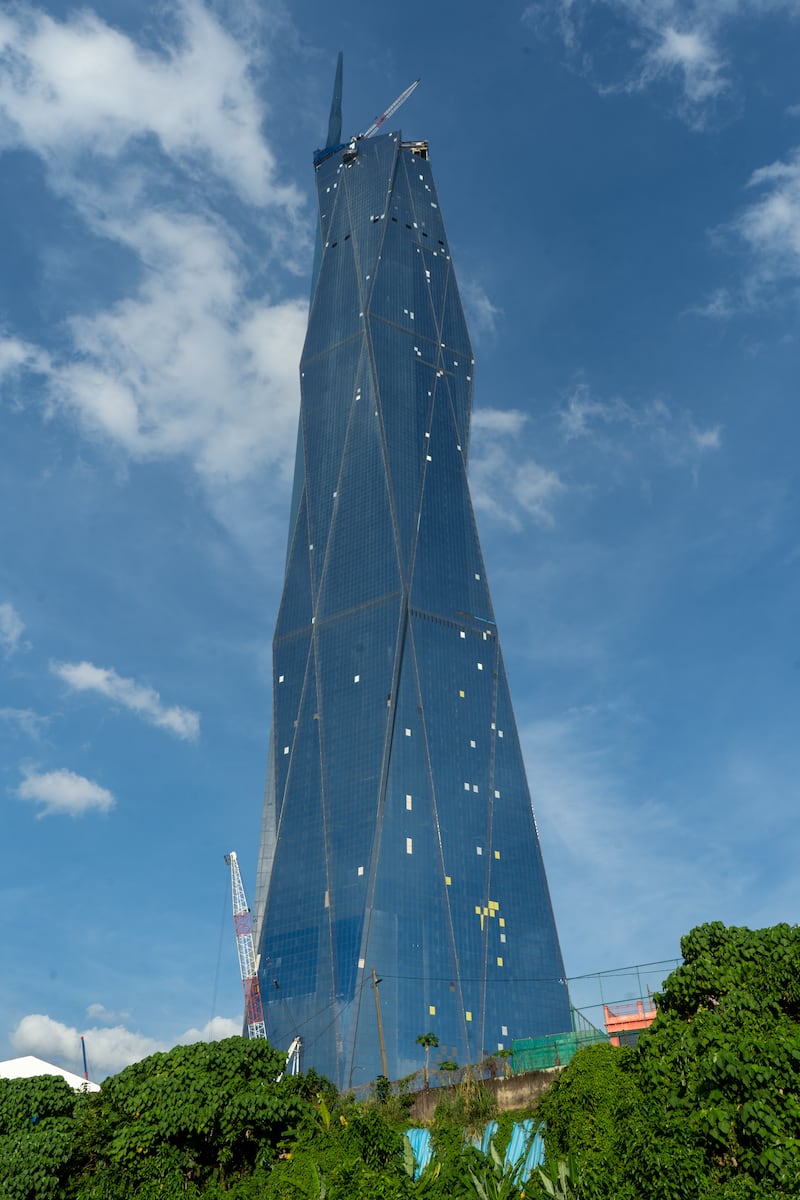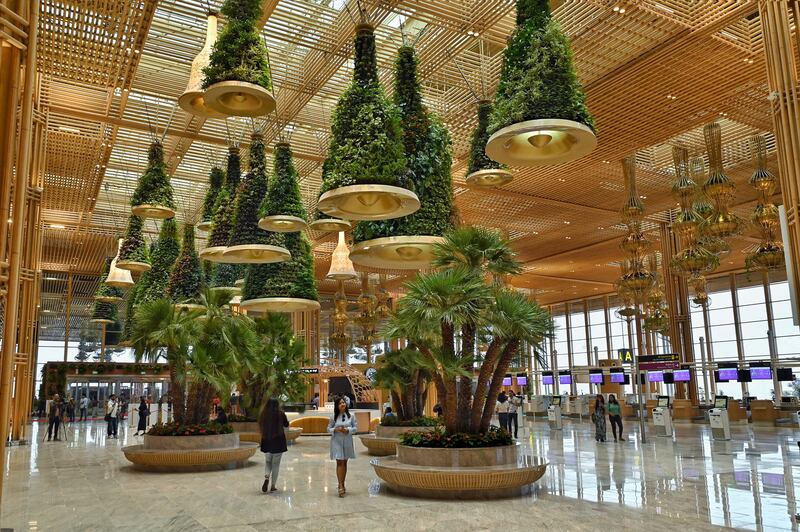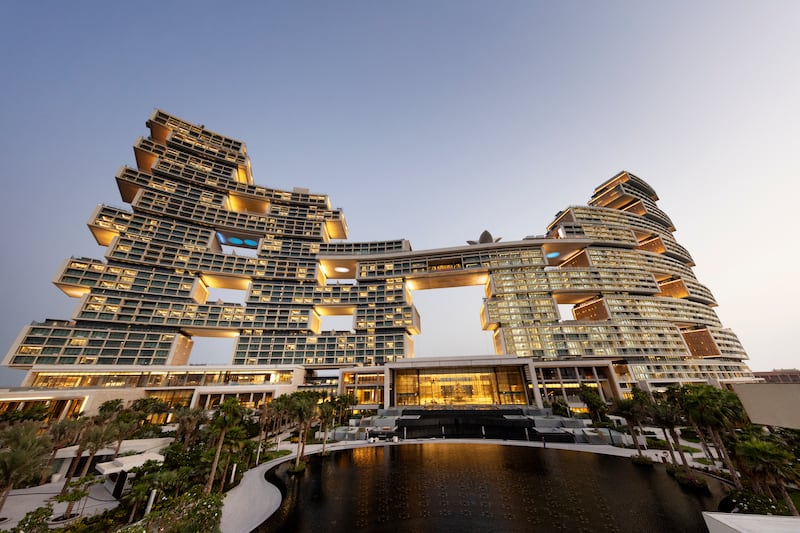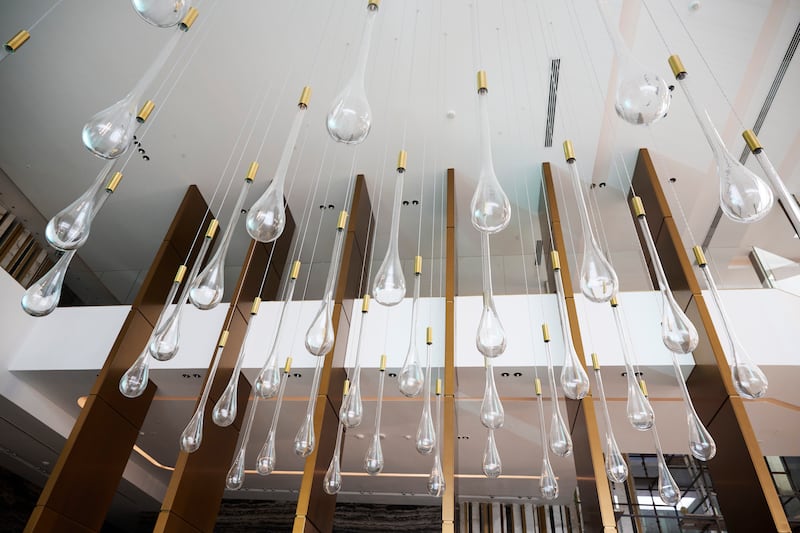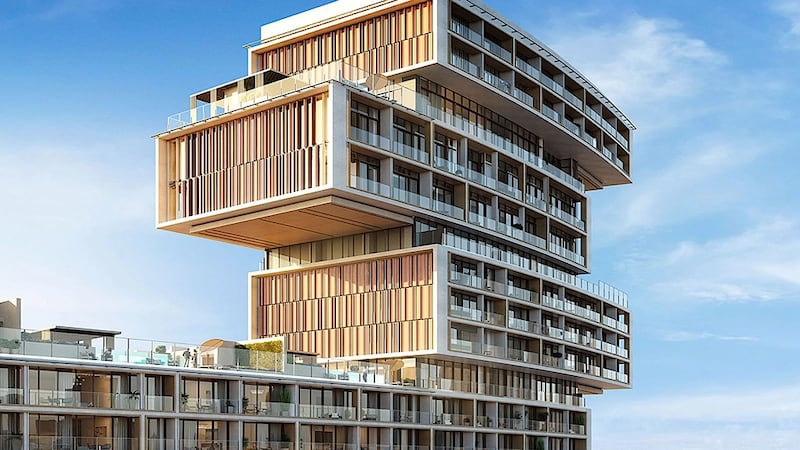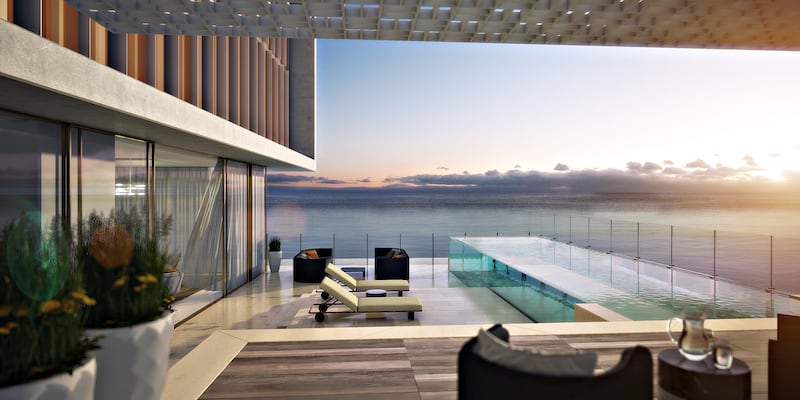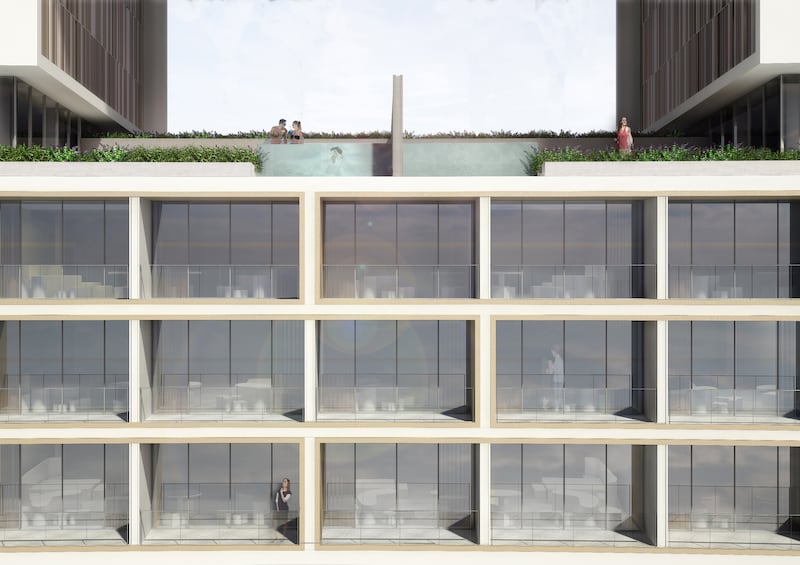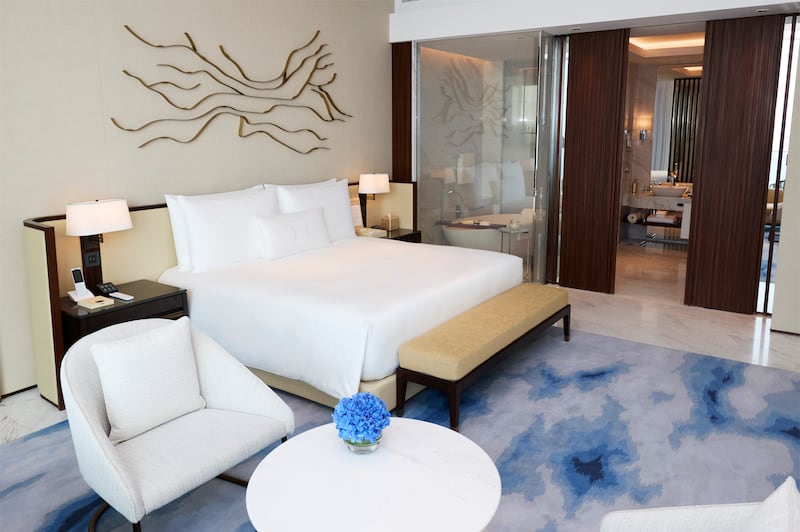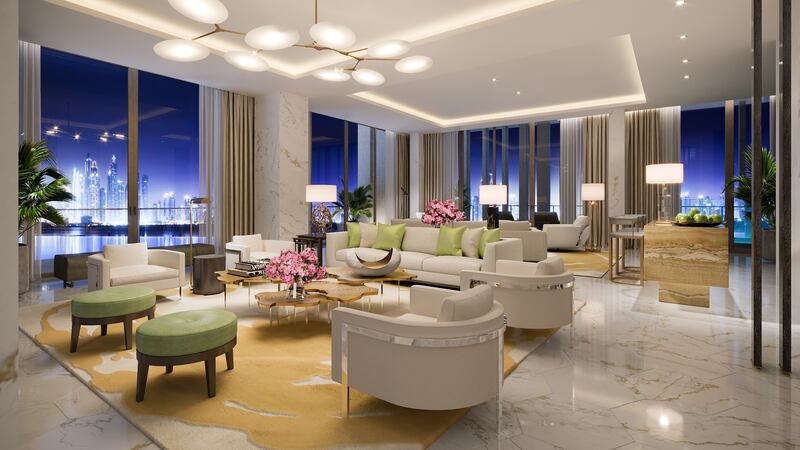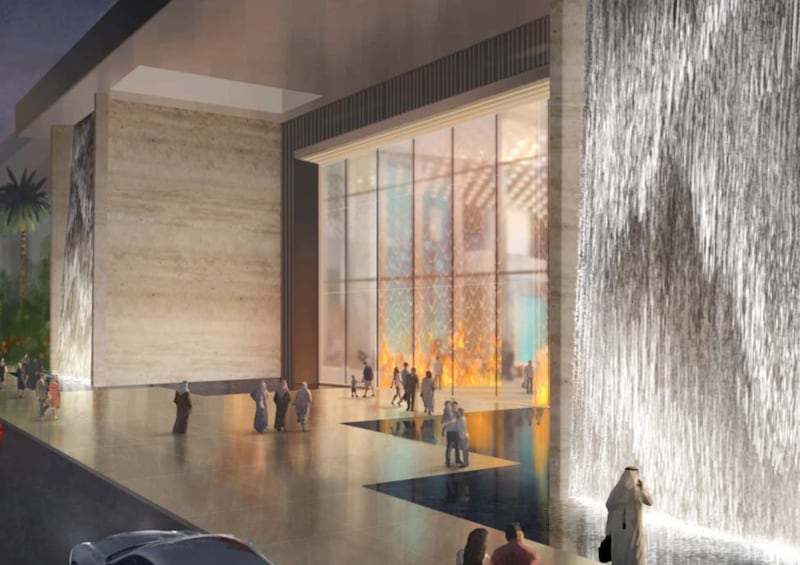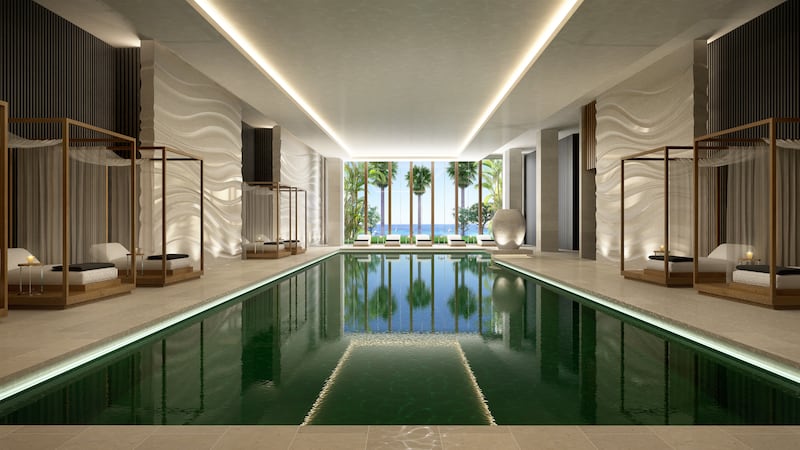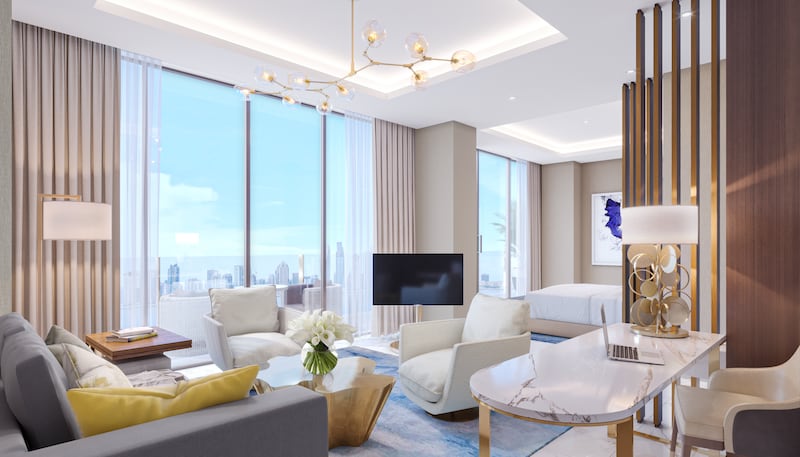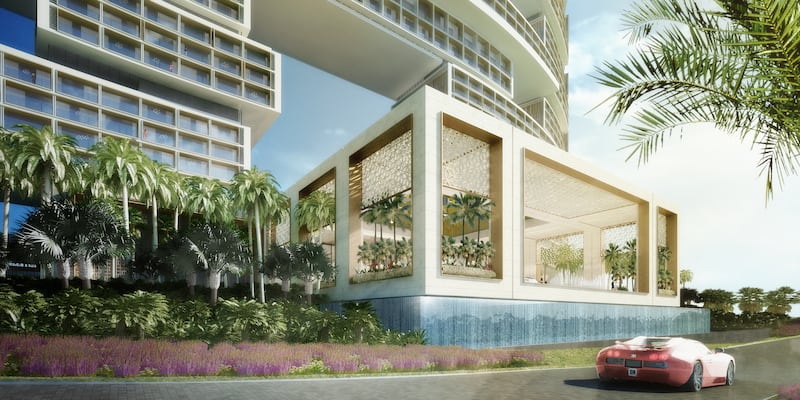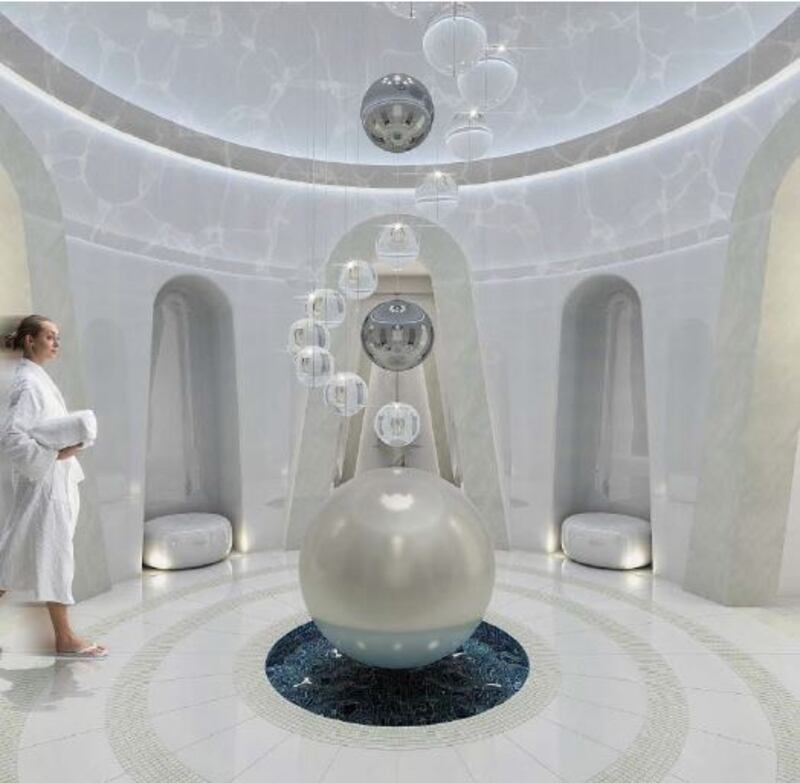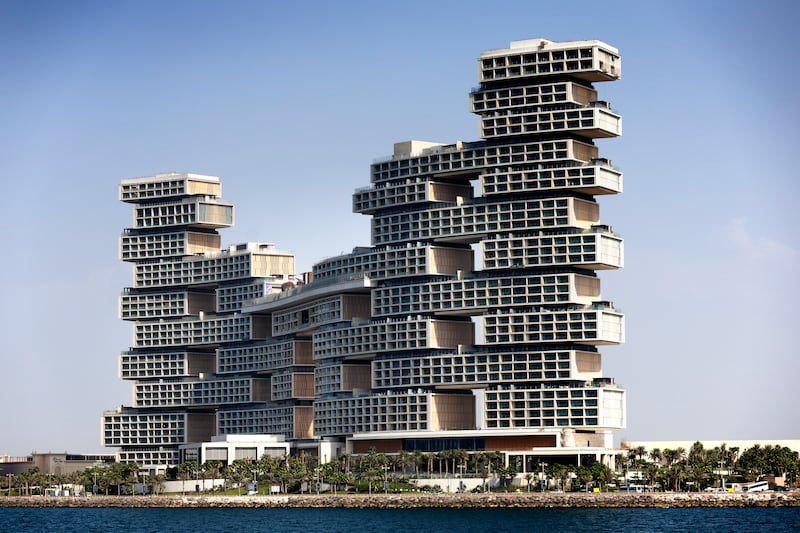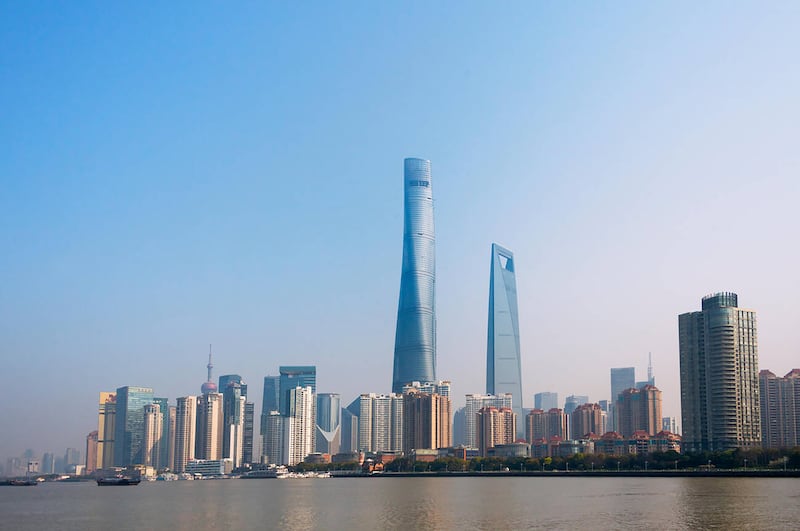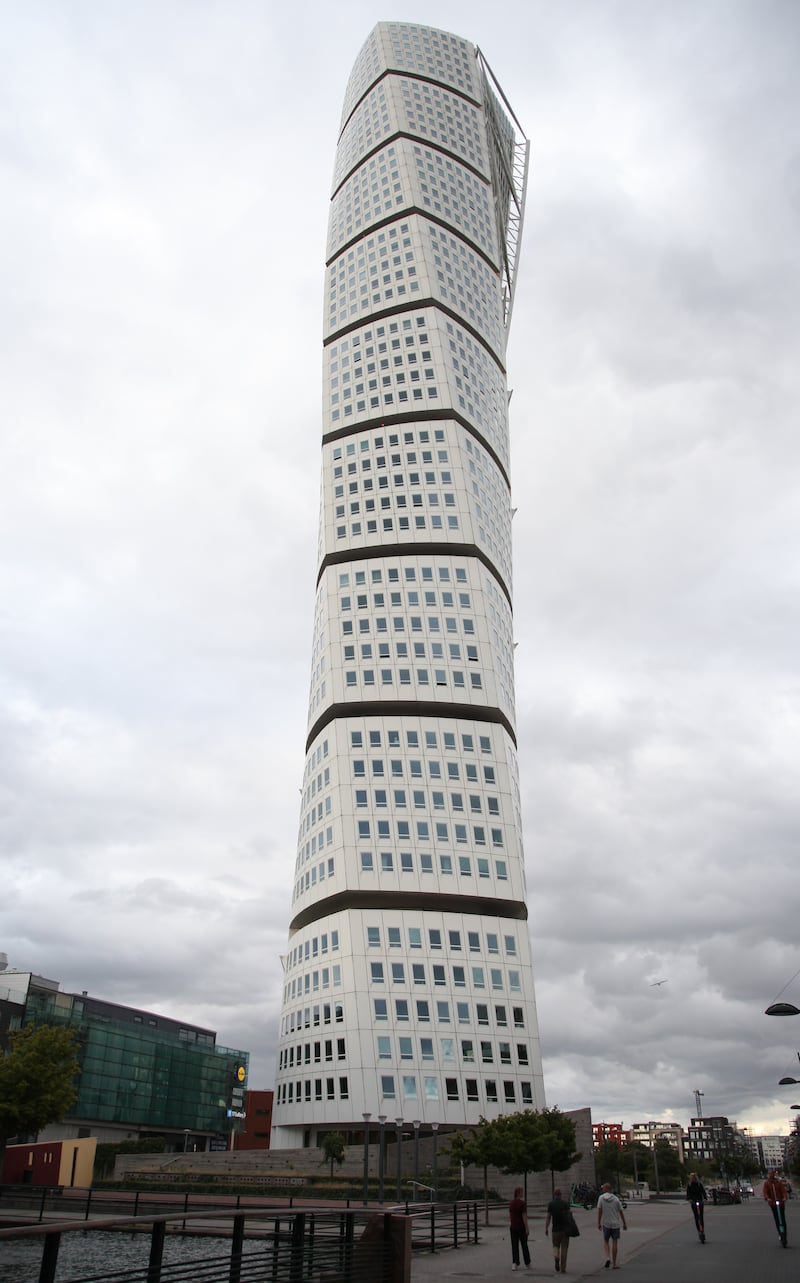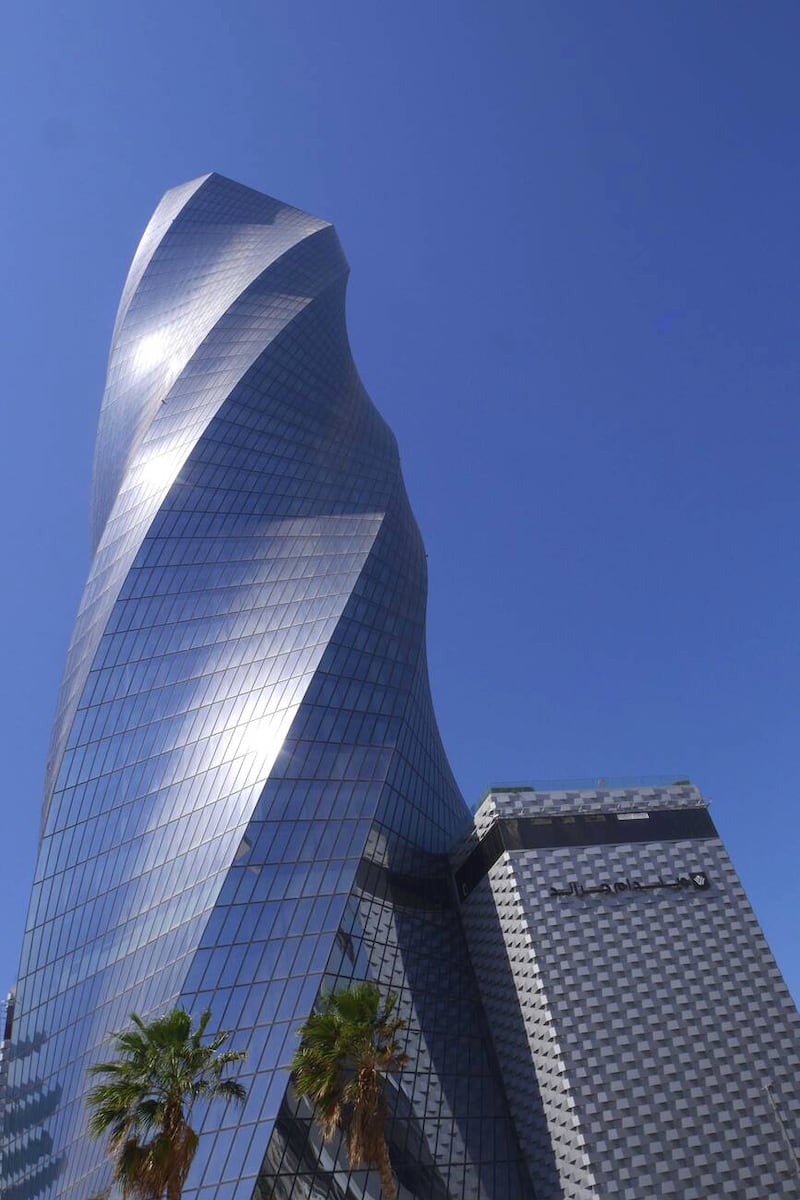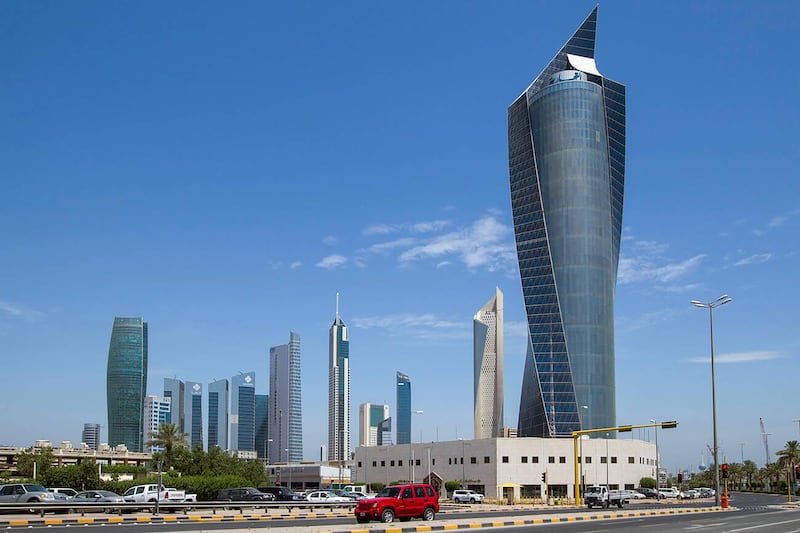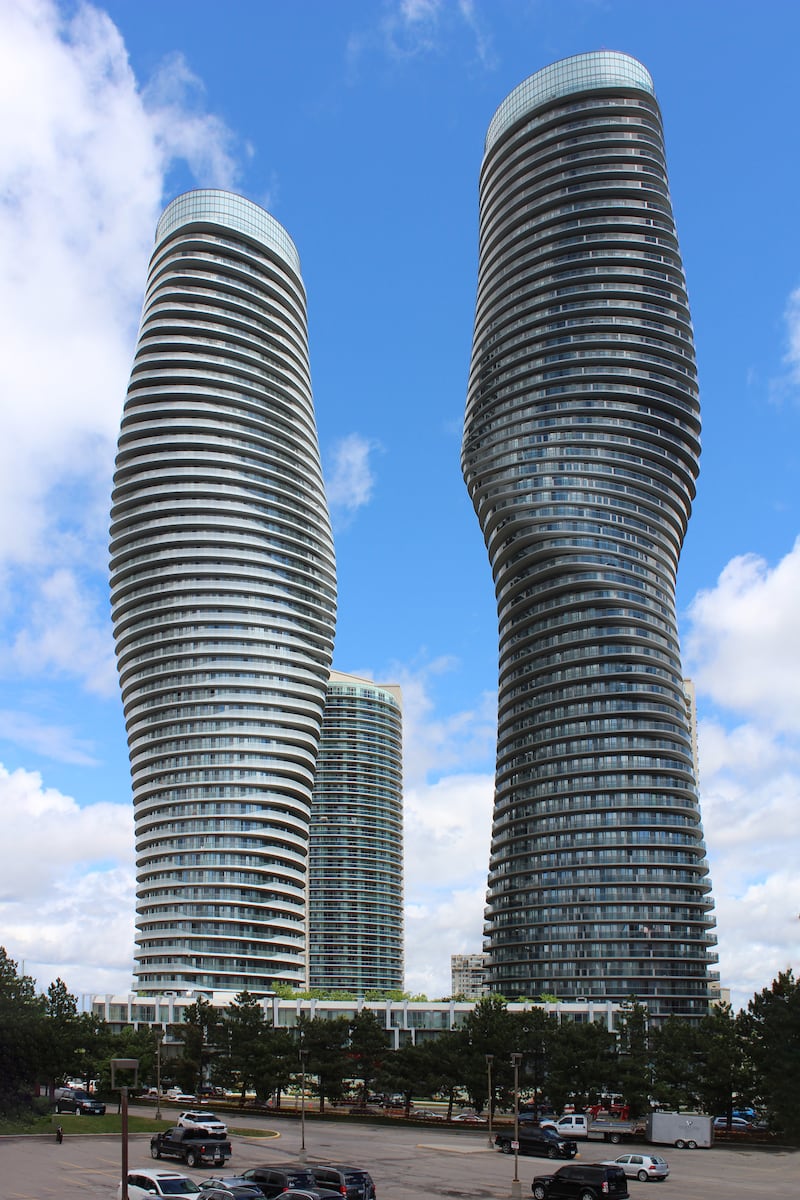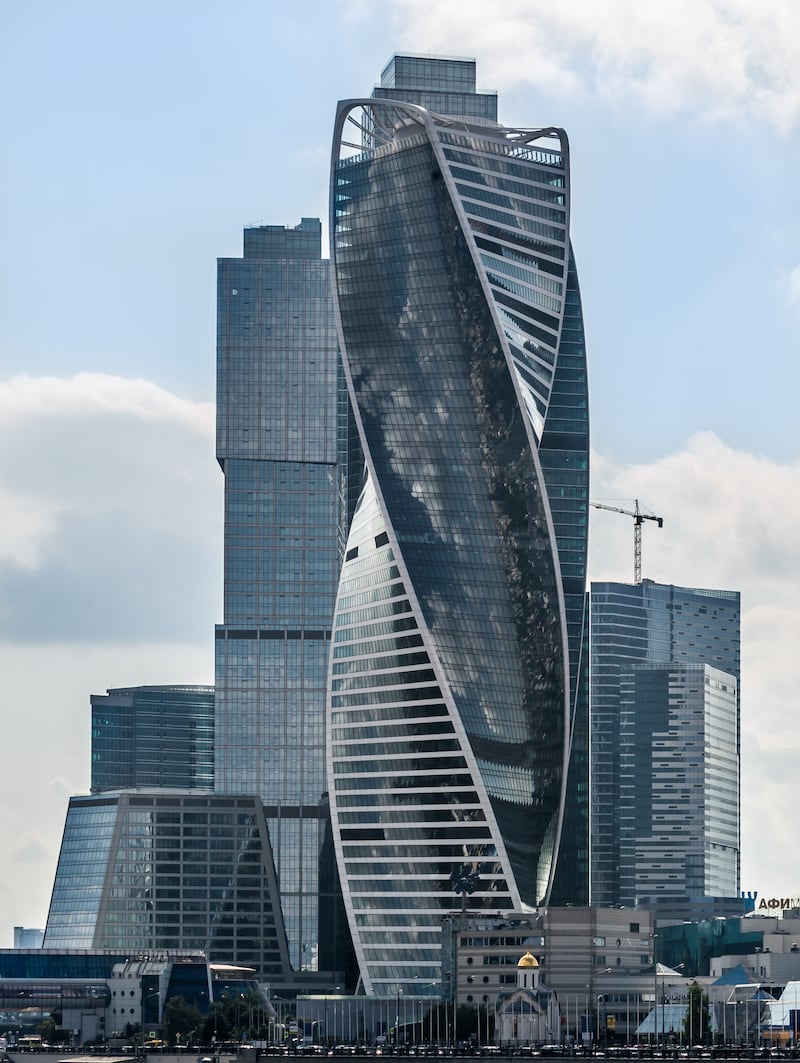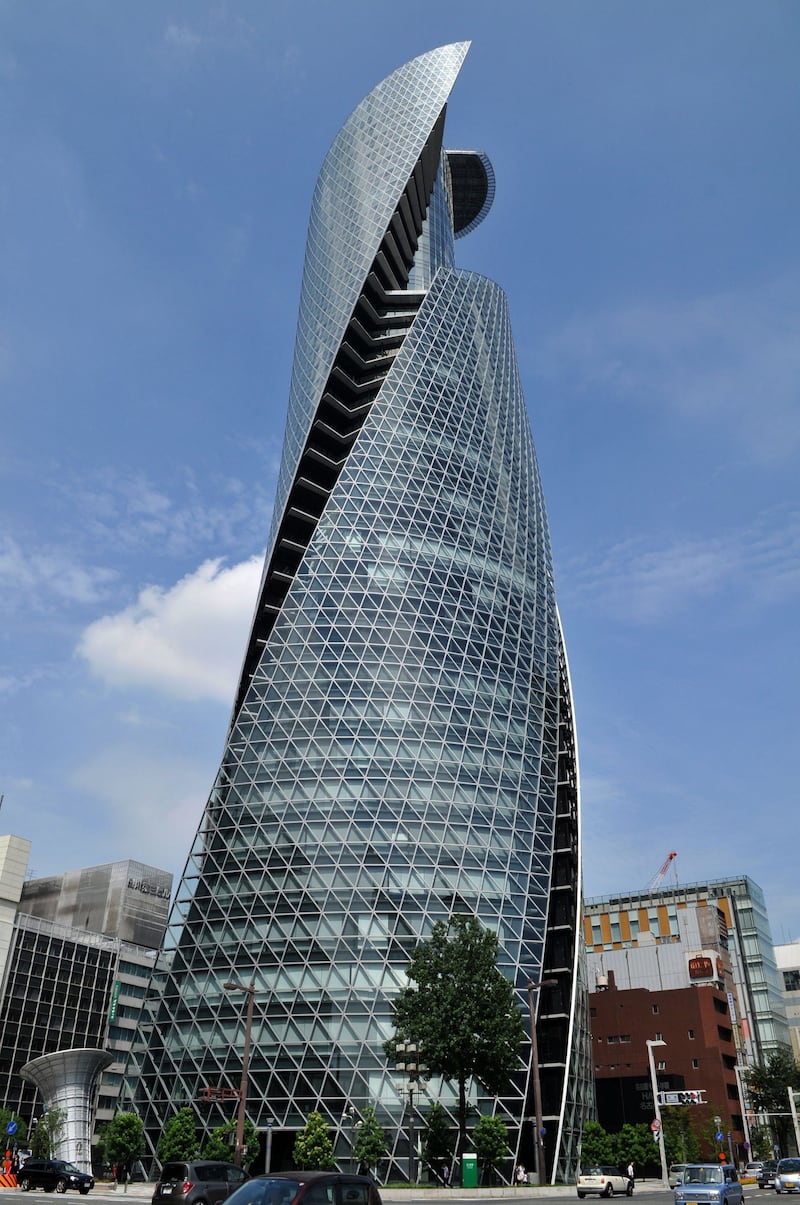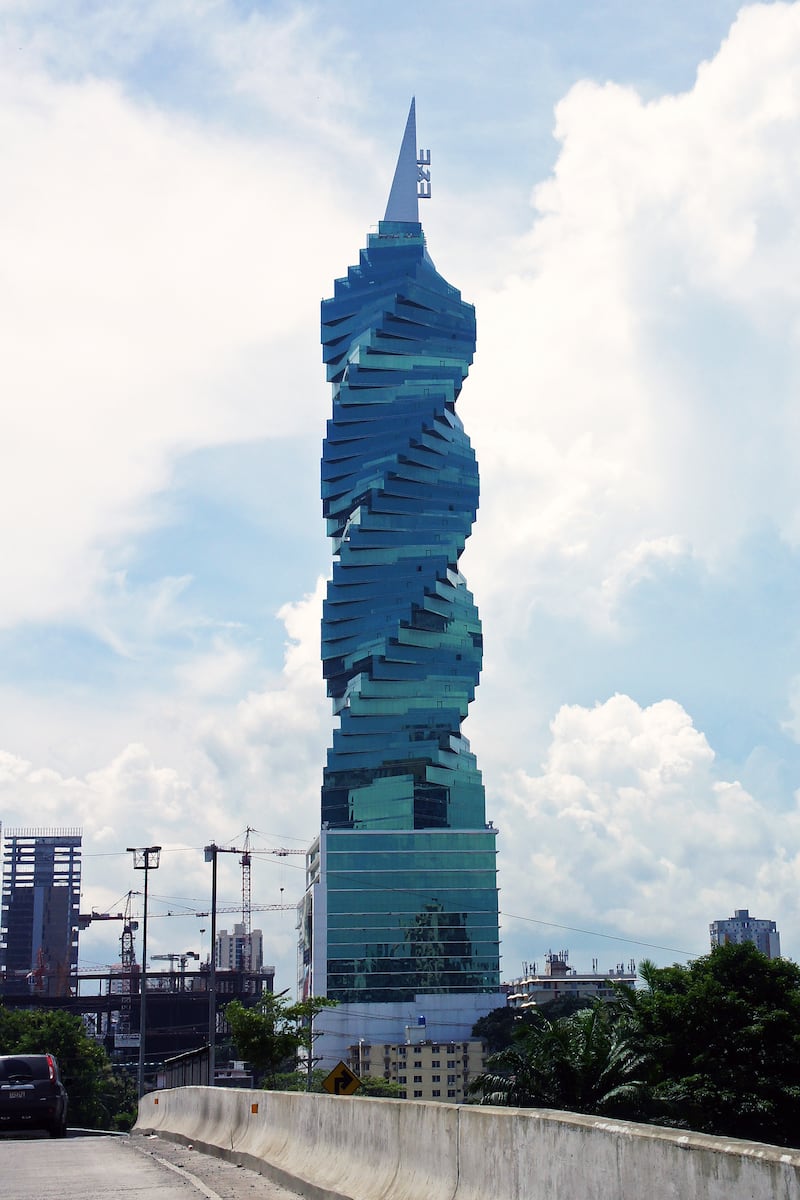Asia and the Middle East region are well known for unique architecture. Nine out of 10 of the world's tallest skyscrapers can be found here, but the bigger-is-better approach isn't all that makes it stand out.
Architects across both regions are rethinking the way they build, whether through sustainability credentials or the story each construction is telling.
Here are some of the most standout projects being completed this year, proving architectural boundaries are still being pushed.
Ciel Tower, Dubai, UAE
Dubai is about to smash its own record. The First Group's Ciel Tower in Dubai Marina is set to be the world's tallest standalone hotel, at 365 metres, surpassing the previous record of 356 metres by Gevora Hotel, which is on Sheikh Zayed Road.
It will have more than 1,000 guestrooms and suites, as well as premium amenities, such as the Ciel Observatory & Lounge on the 81st floor and a signature rooftop Sky Terrace with an infinity pool and bar.
Work on the megaproject is on track to meet the scheduled completion date in the fourth quarter of this year, and the hotel's opening in the first half of next year.
It was designed by Dubai's Norr Group, as an "inspired response to vertical living", according to the architecture firm's website. "The positioning of the form on the site and the overall massing of the tower offers views in all directions. Abstractly sculpted from metal and glass, the curved forms gently reflect in the setting sun."
Atlantis The Royal, Dubai, UAE
Another hotel in Dubai making international headlines is Atlantis The Royal, which finally opens this week.
This ultra-luxury waterfront hotel and residence on Dubai's Palm Jumeirah is set to have music megastar Beyonce perform at its opening on Saturday.
The resort, designed by Kohn Pedersen Fox Associates, or KPF, spans 63 hectares and houses 795 rooms and suites, countless hospitality venues and no less than 90 swimming pools.
Its distinctive form consists of six towers shaped like a stack of individual blocks, connected from above by a 90-metre by 33-metre sky bridge.
Dramatic water features, vertical gardens and an expansive sky bridge are among the defining design features of the mega-resort. Sitting brazenly on the outer crescent of the Palm Jumeirah, its dominating silhouette has already become an integral part of Dubai’s skyline.
The much-anticipated property, which has been years in the making, is accepting bookings for stays from February 10.
Abrahamic Family House, Abu Dhabi, UAE
Currently being built on Saadiyat Island, the Abrahamic Family House aims to represent and preserve the three Abrahamic religions — Islam, Christianity and Judaism.
The houses of worship are designed as three clear geometric cubes that sit on a plinth, connected by pathways and gardens. The structures share equal external dimensions — height, width and a unifying roof — emphasising through design that no faith is more dominant than the other.
It's been designed by Sir David Adjaye, who has said he wants the space to be a place that connects people, and welcomes discussion about their roots and faith.
It is due to be completed this year.
Grand Egyptian Museum, Cairo, Egypt
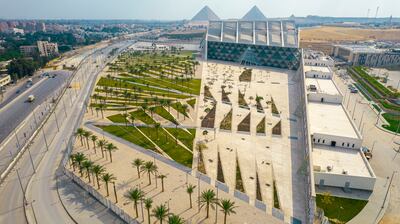
The world is waiting for the Grand Egyptian Museum, also known as the Giza Museum, to finally open its doors. Its opening was postponed from 2021 due to the pandemic.
It is set to be the largest archaeological museum in the world once it does, with artefacts of ancient Egypt, many dating back thousands of years, including the complete Tutankhamun collection.
Located 2km from the Pyramids of Giza, the new museum complex occupies an area of 500,000 square metres.
Designed by Dublin's Heneghan Peng Architects, the building, which is triangular in form, pays homage to the pyramids. It will feature exhibition spaces, a children's museum, conservation centre and outdoor spaces such as a sculpture garden.
It started welcoming a limited number of guests in November, ahead of its official opening this year.
Iconic Tower, Cairo, Egypt
Almost five years in the making, Africa’s tallest skyscraper has risen in the desert, 45km east of the Nile and the centre of Cairo.
The 385-metre, 78-storey Iconic Tower is expected to be finally finished this year, after numerous delays.
It will be the centrepiece among the 20 towers of the Central Business District in the New Administrative Capital, a megaproject launched by Egyptian President Abdel Fattah El Sisi in 2015.
Dar Al-Handasah, an architectural firm founded in Beirut in 1956 with a principal design centre in Cairo, began work on the Iconic Tower in May 2018, with construction starting in 2019.
Built on an area of 65,000 square metres, the Iconic Tower is about half the height of the Burj Khalifa.
It’s one of about 20 skyscrapers being built in the new central business district.
Merdeka 118, Kuala Lumpur, Malaysia
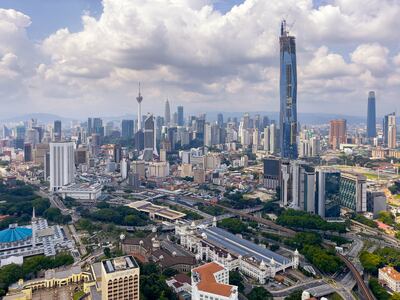
The tallest building to open this year is Merdeka 118, set to become the world's second-tallest skyscraper.
At 678.9 metres, it's only 150 metres short of the current record holder for the tallest building, Dubai's Burj Khalifa.
It steals the title from China's Shanghai Tower, which stands 632 metres tall.
Designed by Australian firm Fender Katsalidis, Merdeka 118 is scheduled to be completed this year after construction delays.
Built on the historically significant Merdeka site, where Malaysia's independence was declared in 1957, the building’s 118 storeys will house offices and a hotel, topped by a dual-level observation deck and a restaurant, which is expected to be the highest in South-East Asia.
The building’s exterior design is modelled on triangular shapes found in traditional Malaysian arts and crafts.
Kempegowda International Airport, Bengaluru, India
Airport design has gotten more chic and competitive over the years, with the likes of Singapore's Changi and the numerous airports coming up in Saudi Arabia raising the bar for architecture firms.
This year, India will welcome Kempegowda International Airport's 250,000-square-metre Terminal 2 in Bengaluru, the country's third most populous city.
Capacity is expected to be boosted by about 25 million, increasing to 40 million after the second phase of construction is complete.
Skidmore, Owings & Merrill, the firm behind world-renowned projects such as Burj Khalifa and New York's One World Trade Centre, are behind the job.
“Designed as a reflection of this city, it is founded on four pillars: technological leadership, the idea of a terminal in a garden, environmental and ecological stewardship, and a celebration of Karnataka’s rich heritage and culture," said Hari Marar, chief executive and managing director of Bengaluru International Airport Limited.
Inspiration is taken from nature, with interconnected buildings joined together by landscaped, foliage-strewn spaces featuring indoor waterfalls, a vast, three-story “forest belt” and bamboo-clad ceilings.
Scroll through images of the world's most twisted towers below
